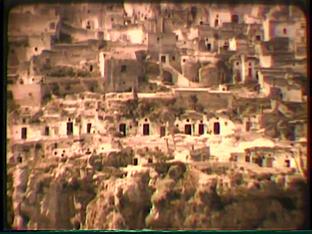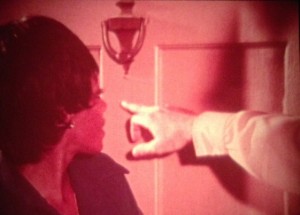Wunderkino 4: Visions of House and Home
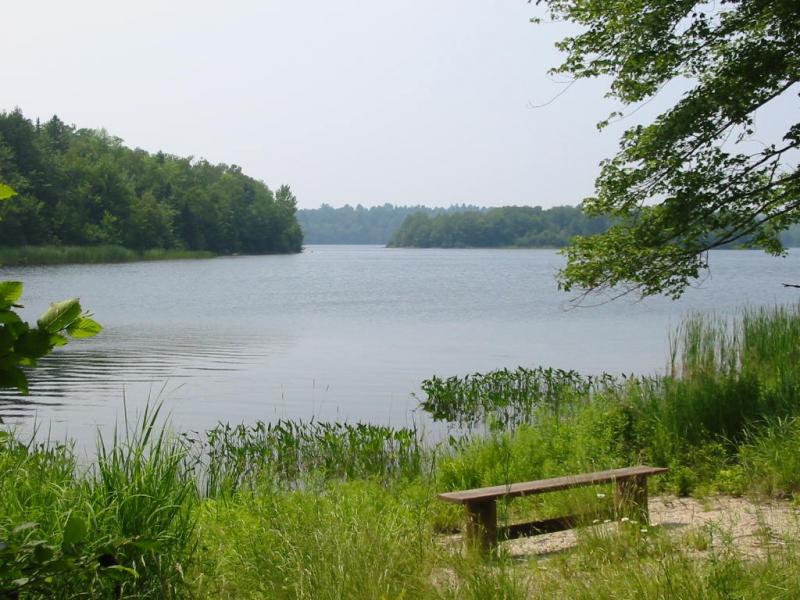 The wonders on offer in Bucksport, Maine – and illustrations of them relating to law-enforcement training, amateur “home movies,” and Egyptian archaeology.
The wonders on offer in Bucksport, Maine – and illustrations of them relating to law-enforcement training, amateur “home movies,” and Egyptian archaeology.
Make a note to yourself, now: Next year, get to Bucksport, Maine, for Wunderkino.
Just how wondrous film can be, in ways and styles that generally escape attention, is the constant theme of Wunderkino, whose 2014 edition just took place [24-26 July 2014] as the 15th Annual Northeast Historic Film Summer Symposium. It is an annual, three-day summer jaunt that rewards the effort of traveling to the Northeast of the United States.
Each event offers presentations around an annual theme – this year it was: house, home, and domesticity. (For items on three of the presentations, see below.)
The folks at Northeast Historic Film, the not-for-profit organization that holds the event, conceive of wunderkino as “wonder-cinema” — “moving images that ignite our curiosity and engagement” and that provoke a rethink of how film can work in whatever form it comes, and particularly in its less broadly publicized and familiar amateur and non-commercial varieties.
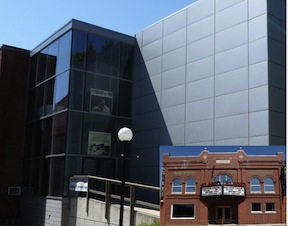 Whether you’d like to find out a little about early filming of archaeological digs in Egypt and elsewhere, or just to see what kinds of projects are undertaken in the academic branches of studies of historic moving images, Wunderkino is a good bet.
Whether you’d like to find out a little about early filming of archaeological digs in Egypt and elsewhere, or just to see what kinds of projects are undertaken in the academic branches of studies of historic moving images, Wunderkino is a good bet.
Particularly for anyone new to the world of moving-image archiving, or beginning to savor its pleasures, the annual symposium held by Northeast Historic Film in Bucksport, Maine, offers a rich sampling of the variety of academic studies under way.
At the multi-disciplinary gathering devoted to the history, theory, and preservation of amateur and nontheatrical moving images, a friendly group of archivists, scholars, artists, and in fact any interested parties address questions that organizers pose.
The NHF summer symposiums have a tradition of 15 years old and counting and are well-regarded: in 2013 Northeast Historic Film received the Silver Light Award from the Association of Moving Image Archivists for significant contributions to the field. They make use of a 125-seat cinema with 35mm, 16mm, video, and DVD projection.
That breaks down to such queries as: What activities define house and home on film? How do notions and conventions of home frame regions, communities, and people in amateur films, industrial films, and educational films? How does the performance of domesticity size or resize the frame?
The meeting’s setting adds to its appeal: Bucksport is a town of 5,000 on the coast of Maine. (See earlier MIAN articles, here, here, and here.)
How to Build a Home: Dick Proenneke’s Experimental Domesticity — Oliver Gaycken (University of Maryland) considered the widely distributed amateur/natural-history/experimental film that Dick Proenneke made of the wilderness life he led in Alaska from 1967 for 30 years, and of his amateur observations of weather and wildlife.
Life and Death of a Cave City: Documenting the Failures of a Futurist Society — Brian Real (University of Maryland) presents one of the few Marshall Plan films shot in color, one that disorients with its images of fine Italian architecture and narration about the devastation of post-war life in Matera, later setting for various films including Pasolini’s Gospel According to Saint Matthew.
The Home of the Future in the World of Tomorrow — Caitlin McGrath (University of Maryland) discusses the role of film in presenting the house and domestic sphere of the future at the 1939 New York World’s Fair.
The Viking Video Productions Collection: Constructing Visions of Maine’s Rural Identity — Gemma Scott (University of Maine) presents Viking Video Productions, the second high-school vocational program of its kind in Maine. It flourished for a decade, producing award-winning short films and providing hands-on media-production experience to a generation of students in the face of a lack of support for an innovative teaching method.
Working in the “People’s House”: The Nixon Staff Super-8 Collection — Katrina Dixon (independent archival researcher) & Brian L. Frye University of Kentucky College of Law) discuss the 500+ rolls of Super-8 home movies that Nixon aides H.R. Haldeman, John Ehrlichman, and Dwight Chapin made between 1969 and 1973. (See “Our Nixon is Probably Not Your Nixon“.)
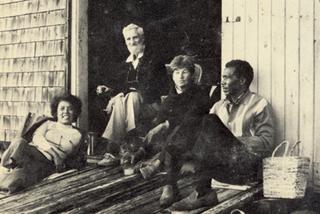
Photo: Chrissie Nevius
Conversations in Maine: The Schoolhouse on Sutton Island — Brian Graney (Black Film Center, Indiana University) presents film that Frances Reid (Long Night’s Journey into Day) captured of the community, environment, domestic activities, and impassioned discussions at “the Schoolhouse” on Sutton Island, Maine, during the summer of 1987, two decades into its hosting radical activists, community organizers, artists, and scholars.
Home on the Plantation: Rural Mississippi Home Movies and Life Beyond the Family — Ashley Smith (Stockholm University) presents amateur films held in the Lytle Collection and the Gary Collection at the University of Mississippi archives that capture the gradual shift to mechanization on Delta cotton farms during the late 1930s and early 1940s. Amid the transition from sustainable manual and mule-driven labor to the tilling, sewing, digging, and threshing of machines, “home” was redefined, Smith argues.
Father Knows Best: The Home as the Complete Archive — Dino Everett (University of Southern California) says don’t diss the home-film archivist: “Large film archives have existed in their own little bubble for so long that it is hard for them to imagine that others have been doing it even longer. But all archives can learn a great deal from the amateur who has always put equal emphasis on the equipment as on the films” including splicers, printers, perforators, and splitters that they created to shoot, duplicate, and preserve their films.
THREE PRESENTATIONS
n
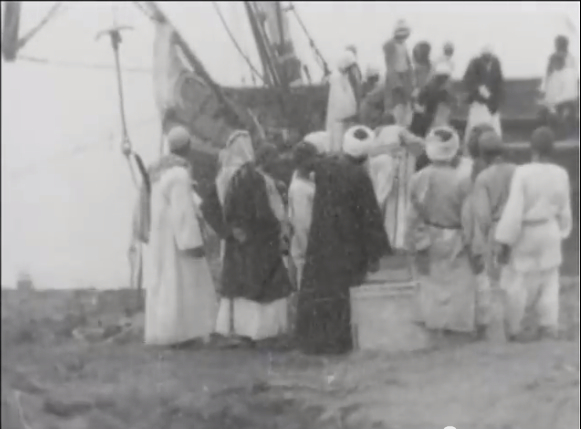
Digging up Films of Archaeological Excavations
Egyptologists and other archaeologists “tend not to look to films in their research,” which is a pity, because some enlightening historical archaeological films exist, says Michael McCluskey, a British Academy Postdoctoral Fellow in the department of English at University College London.
In his presentation, “The Dig House: Amateur Film as Artifact,” he discussed a set of films held among the many treasures in the London-based Egypt Exploration Society’s Lucy Gura Archive is a film record made between 1921 and 1936 of excavations at Tell el-Amarna, the ancient capital city of the Egyptian pharaoh Akhenaten.
The dig was highly influential, then – it turned up palaces, houses, temples, and thousands of other artifacts. The published reports of the excavation, The City of Akhenaten, remain standard texts, even now.
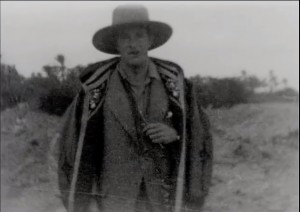
Images: Lucy Gura Archive, Egypt Exploration Society
A reflection of the marginal role film has been given in archaeology is that the films are the only moving-image materials that the EES holds. Not holds, precisely — the films exist only as digital files, in a vague kinship with the spectral artifacts scholars know must lie under desert sands. “The originals are lost — as far as we know — though some of the original film canisters are still around,” says McCluskey.
He examined innovations in archeological technique that came into use at the time the film was shot – from 1930 to 1933, when a young explorer named John Pendlebury succeeded far better-known archaeologists and signalled a new approach to the study by making pioneering use of film in archaeology at an excavation site in Egypt, 1930-1933. Pendlebury, who began the dig as a 26-year-old director, filmed the work, administrative interactions, and social setting of the dig house – interactions among archaeologists, artifacts, British subjects, local cultures, modernity, and antiquity. He also has come to be celebrated as something of a renaissance man: archaeologist, scholar, athlete, war hero.
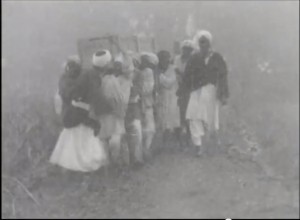 Therein lies the interest of the footage. In that McCluskey agrees with the director of the EES, Chris Naunton, who he says is “eager to drum up interest in them among researchers from different disciplines.”
Therein lies the interest of the footage. In that McCluskey agrees with the director of the EES, Chris Naunton, who he says is “eager to drum up interest in them among researchers from different disciplines.”
Naunton has posted online his brief documentary about the footage and it makes for compelling viewing, and in it notes that the purpose of the film was itself in part to publicize the dig as a way to attract benefactors. In the first of two parts of EES Excavations at Amarna, subtitled “John Pendlebury,” Naunton draws attention to both the archaeological work, but also the people who performed and supported it.
He includes film testifying to Pendlebury’s vaunted athleticism: in one sequence, the 1926-27 Cambridge “Blue” appears clad in shorts that seem appropriate to the climate, but also a public-school cricket sweater that seems decidedly not. He banned motorized vehicles because they would “spoil the atmosphere,” and organized running races and other emblematic activities of the Chariots of Fire set. Indeed, Pendlebury came close to selection for the 1924 British Olympic team, the setting for the climax of the 1981 film of that name. One sporting event he devised for his workers was a foot race in which the competitors had to knock a ball along the parched ground with a hockey stick. Jolly stuff.
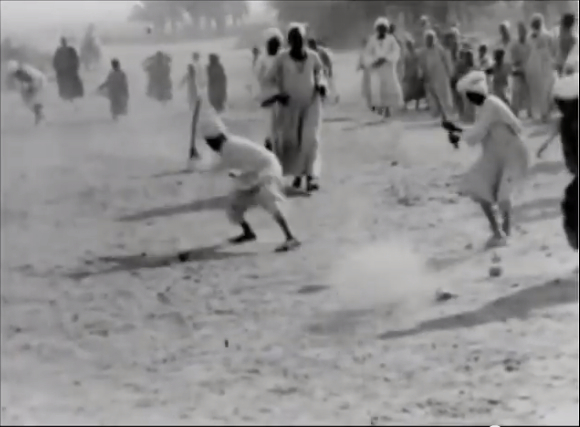
n
The footage also gives a sense of the nature of employment relations in the field: one sequence shows a line of numerous local labourers, male and female, scurrying along to empty paniers of sand and dirt from the excavations, encouraged on the way by a foreman flicking at them with a switch.
As Naunton says, film conveys the activities “like no photograph or written description ever could. It represents a unique record of one of the society’s most significant contributions to archaeology and Egyptology.”
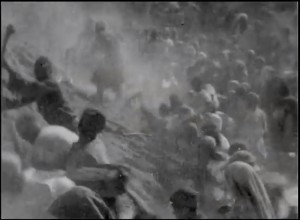 Like Naunton, McCluskey wishes to draw attention to the preserved film, and to archaeology related film, in general. In a project called Filming Antiquity, he and Amara Thornton of the Institute of Archaeology at University College London are digitising and making available online a variety of excavation films in the collection of UCL’s Institute of Archaeology. They are also posting links to films from other collections and trying to raise awareness of films held in small collections like the EES.
Like Naunton, McCluskey wishes to draw attention to the preserved film, and to archaeology related film, in general. In a project called Filming Antiquity, he and Amara Thornton of the Institute of Archaeology at University College London are digitising and making available online a variety of excavation films in the collection of UCL’s Institute of Archaeology. They are also posting links to films from other collections and trying to raise awareness of films held in small collections like the EES.
The website, and a seminar series McCluskey and Thornton are creating, will be “for people to come together to discuss the films, archiving issues, access,” and anything else the footage provokes, he says.
The second part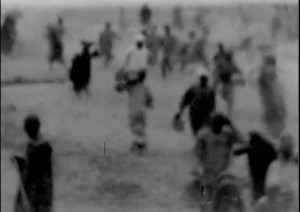 of Naunton’s introductory documentary, “The House of Hatiay,” shows some of the archaeological and architectural details of the dig. Much of the footage shows the uncovering and removal of a lintel from a house that, most unusually, revealed the name of the builder and owner — Akhenaten’s overseer of works, Hatiay. From there the Cairo collection or distribution by the Society to museums around the world.
of Naunton’s introductory documentary, “The House of Hatiay,” shows some of the archaeological and architectural details of the dig. Much of the footage shows the uncovering and removal of a lintel from a house that, most unusually, revealed the name of the builder and owner — Akhenaten’s overseer of works, Hatiay. From there the Cairo collection or distribution by the Society to museums around the world.
The films, McCluskey believes, not only reveal some of the day-to-day activities of long-ago digs that text and even photographs cannot record; they also “can help us to further our understanding of amateur film as social practice and cultural artifact.
How to deal with the naughty and the nice
Regulating traffic, testifying in court, and performing other tasks of the constabulary, as well as how to make good use of police officers or to dodge needing them or attracting their attention at all… Those are matters dealt with in films discussed at Wunderkino by Travis Wagner of the University of South Carolina in a presentation titled “I Might Recommend Installing A Peephole”: Navigating the Space of Home in Law Enforcement Training Films.
He describes his use of and access to archival material:
The moving-image materials I used are fairly common, in so much as they are educational films which were specifically intended to train police officers and communities on various aspects of safety and crime prevention.
What this does mean, however, is that in the case of archival preservation these items are often ignored, if not outright tossed away. Fortunately, my archive has kept their donated collection of police training films from a local precinct, but as the images I have provided show, they are in less than stellar condition and suffer from clear cyan fading.
Indeed, some of the films in this collection suffer from what I might call overuse and fell apart during the initial processing endeavor or continual to fall off of the reel when projected.
Sadly, it is often the items with the most curious or troubling components that this tends to happen to, suggesting that particular issues like kidnapping, rape, and burglary (amongst others) were frequent concerns in the community, whereas works on procedural actions for police or office management remain in pristine condition.
Gaps are not necessarily present in the collecting, but research regarding police training films is definitely minimal, if not outright nonexistent. It has been a headache of sorts to compose anything close to a definitive theory about the purpose of these works and I have relied on a hybrid of educational film theory and police/crime cinema theory to begin such a conceptualization.
As my presentation showed, I am particularly interested in notions of authority and power in these films so I am fascinated by any collections that might provide challenges to these structures.
While we have a few films that deal with issues of race and gender in the police force, I am sure there are a ton more out there and I would love to track them down and begin a more in depth study of these issues.
Doubting vs. coming to love the amateur film
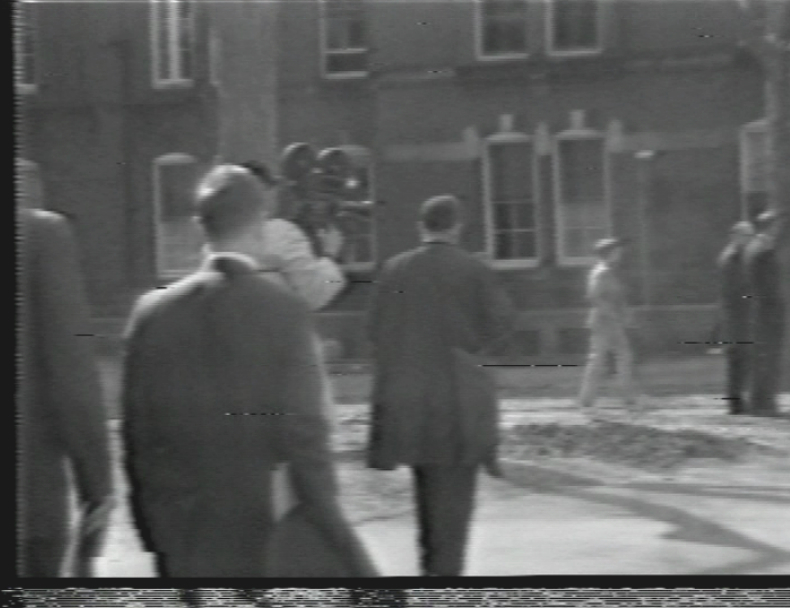 Even among those who study and write about film and other moving-image forms, amateur film and video have long struggled for extensive documentation and analysis. Increasingly, however, it is dawning on scholars and film critics that footage about everyday life, in all its mundane and yet often enthralling nature, warrants closer study – warrants it, and rewards it.
Even among those who study and write about film and other moving-image forms, amateur film and video have long struggled for extensive documentation and analysis. Increasingly, however, it is dawning on scholars and film critics that footage about everyday life, in all its mundane and yet often enthralling nature, warrants closer study – warrants it, and rewards it.
In his presentation “Amateur Film/Amateur Video: Transatlantic Collision, Correlation, and Theory,” Graeme Spurr of the University of Glasgow discussed three views of amateur film and video: in the 1950s, on opposite sides of the Atlantic, two amateur film institutions professed differing visions of their medium; in the late 1960s, disparagement of amateur film and video resembled opinions on new technologies, in general; in the late 1980s, the Lalumiere Home Movie and Archie Stewart collections illustrated video theorist James Moran’s taxonomy of the “home-mode” for the magnetic medium.
If you believe that home movies and videos along with such “marginal” formats as the industrial film and promo spots are more significant and revealing than has generally been supposed, you’ll be in good company at Wunderkino, the annual gathering of moving-image enthusiasts that Northeast Historic Film hosts in Bucksport, Maine.
His presentation, “Amateur Film/Amateur Video: Transatlantic Collision, Correlation and Theory,” emerged from Northeast Historical Film fellowship he completed last year. He outlined three case studies that relate to collections that traverse amateur film to video.
First, a transatlantic skirmish between amateur film institutions played out in their affiliated journals in the early 1950s showcases a unique historical interaction between two international amateur movements; second, a study of cross-atlantic disillusionment and denigration of early amateur film and video reveals correlating opinions on technology at different stages of development in the late 1960s; finally, a comparison of the Lalumiere Home Movie and Archie Stewart collections in the late 1980s and early 1990s illustrate video theorist James Moran’s claims concerning his taxonomy of the ‘home-mode’ for the magnetic medium.
MIAN asked Spurr what avenues he took to prepare his session and what help or obstacles he encountered. Spurr says he has used…
…both paper and moving-image material from not only the Northeast Historic Film archive, but The Scottish Screen Archive, The National Library of Scotland, and the East Anglian film archive, as well.
The level of access I was given at NHF was truly remarkable so there was no difficulty in accessing any material I identified. As with nearly every archive, collections suffered from gaps or incomplete journal runs but these were not major obstructions.
Within the UK, my experience of the archive has been far more mediated by the archivists themselves so it was very refreshing to be left, and trusted to look through collections independently.
— Peter Monaghan, from press releases and reporting
Previous Post: Belleville, Looking Like a Great Place to Live
Next Post: Robert Green's Mardi Gras Balls of the 1950s

